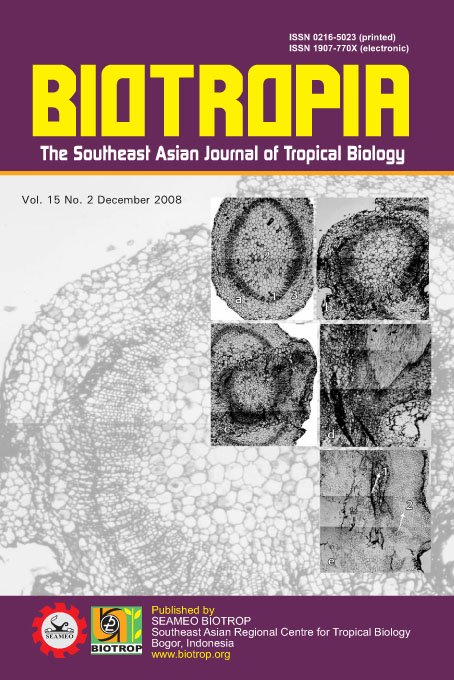
Tags
COMPATIBILITY STUDIES OF INTERSPECIFIC IN VITRO MICROGRAFTING OF AGARWOOD (Aquilaria malaccensis LAMK.)
Content Language : English

Aquilaria spp produced agarwood as nonwood forest production, and has high economic value. A. malaccensis is susceptible to white rot diseases and termites. On the other hand most of the community plantations are a mixed culture with rubber trees, oil palms and with high risk of contamination causing white root diseases. Besides that, vegetative propagation by cuttings, stumping or air layering are still very difficult with low percentage of growth. The objectives of this research were to analyze the best suitable micrograft type, changes of SDS-PAGE protein band patterns of compatible and incompatible micrografts with several combinations of gaharu planlets in in vitro condition, and histology of union area between rootstocks and scion. The results showed that wedge or V type was the best of the micrografs. MS medium with the addition of 3 mg/L IBA was the best medium for gaharu planlet growth after micrografting. Acclimatization was conducted in husk chacoal and top soil (1:1) medium and grown under plastic house of 70% shading with paranet. Compatible combination (Ac/Am) of micrografting showed that anatomy structure of union area is the same as anatomy structure of non micrograftd planlet. While incompatible (Gv/Am) micrografting produced necrotic layer growth from pith and parenchymateous tissues of the wood in union area along the middle of radial shoot. Recovery period of union area between stocks and scion is initiated by callus formation from the pith and parenchymatous tissues of the wood. Callus will differentiate into mature cells or tissue and become combined phloem and xylem vessels between rootstocks and scion. SDS-PAGE protein band pattern on compatible combination was the same as plants originated from seedlings. While, incompatible combination produced new protein bands with molecular weight around 21 and 30 kD.
Link

This work is licensed under a Creative Commons Attribution-NonCommercial-NoDerivatives 4.0 International License.
